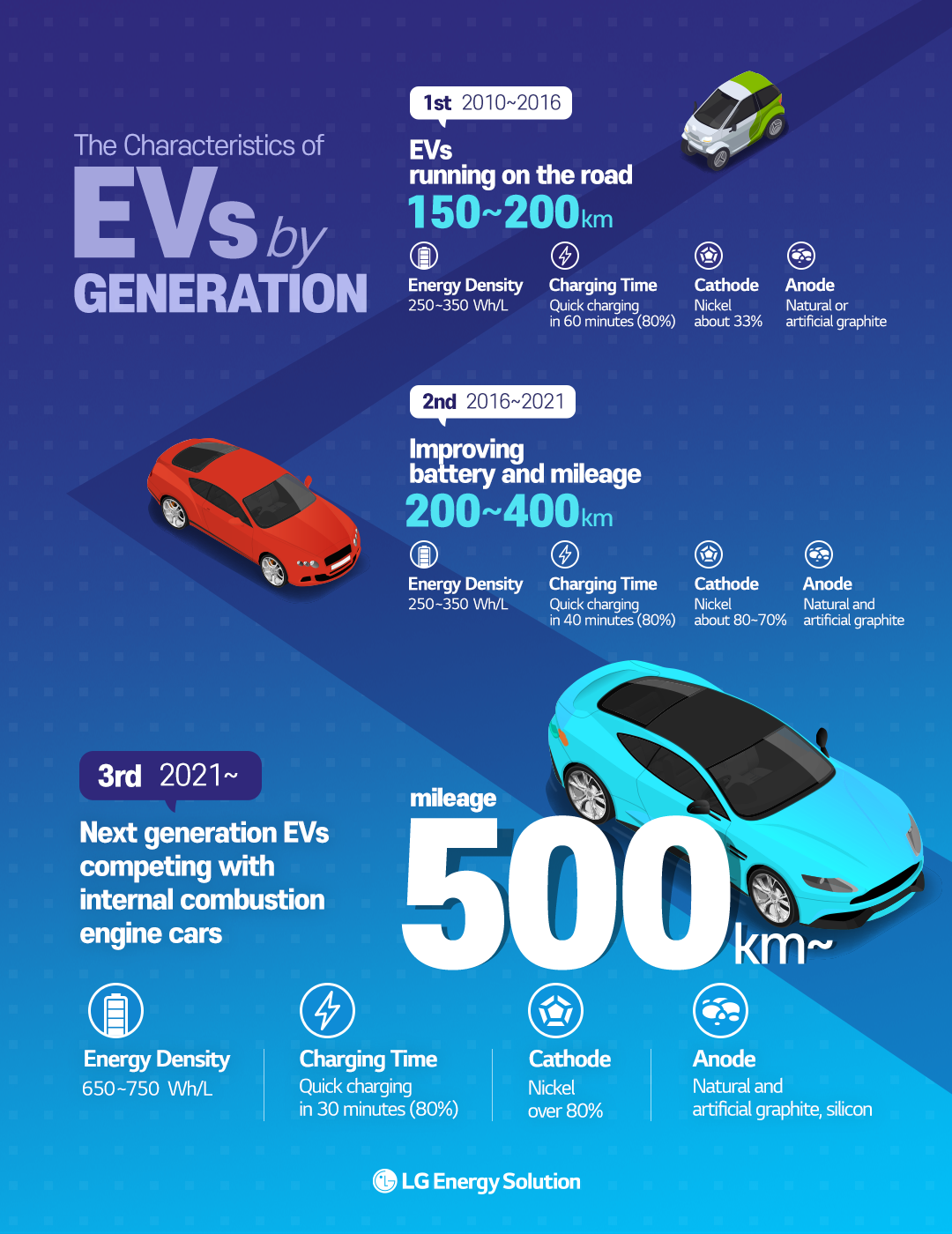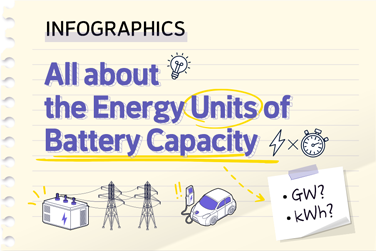As the world recognizes the importance and need for carbon neutrality more than ever, the mobility industry is rapidly transitioning from greenhouse gas-emitting internal combustion engines to environmentally friendly EVs.
EVs have evolved in line with the demand of the time. Among many indicators to measure EV’s performance.
We will divide EVs by mileage into 3 generations and explore their characteristics.

First Generation – Hitting the Road (150~200km)
EVs manufactured from 2010 to 2016 belong to the first generation. The mileage of EVs in this category was 150-200 km, and was not enough to run beyond the metropolitan area starting from Seoul. The batteries took 60 minutes to charge up to 80% on a rapid charge, and the energy density was 250-350 Wh/L. Nickel content in the cathode was 33%, and natural or synthetic graphite was used for the anode.
Second Generation – Improved Battery and Mileage (200~400km)
Demand for EVs increasingly grew from 2016 to 2021 as they had higher performance including longer mileage than their previous generation counterparts. They could travel 200 – 400 km on one charge, and fast charging time shrank to 40 minutes (to charge up to 80%) as the energy density improved to 450 – 550 Wh/L. The content of nickel in the cathode also rose to 60 – 70%.
Third Generation – Competing against Internal Combustion Engines (500kim~)
EVs came to have much higher mileage of above 500 km since 2021, overcoming the limit. Fast charging time also decreased to 30 minutes (to charge up to 80%), about half of the first-generation EVs. The energy density of batteries is 650 – 750 Wh/L. Nickel content in the cathode further climbed to above 80% and the anode contains silicon-based materials as well as natural or synthetic graphite.
We have covered the characteristics of EVs by generation. Carmakers are improving the performance of EVs with longer mileage, shorter charging time, and higher safety, while governments across the world are supporting their efforts with various systems. It looks like the era of EVs is just around the corner.





